Christmas has long been a special time when families reunite and the lights illuminate the overly-dark days of winter. Today we have no end of entertainments, lights, presents, and sweet treats for the occasion. But, in the 1940s the home front Christmases looked a little bit different to how we do things today. And, for those in Europe Christmas was rarely a comfort during the war years. Here are some very telling photos of Christmastime in the US in the 1940s, modest but cheery despite all the young men fighting abroad.
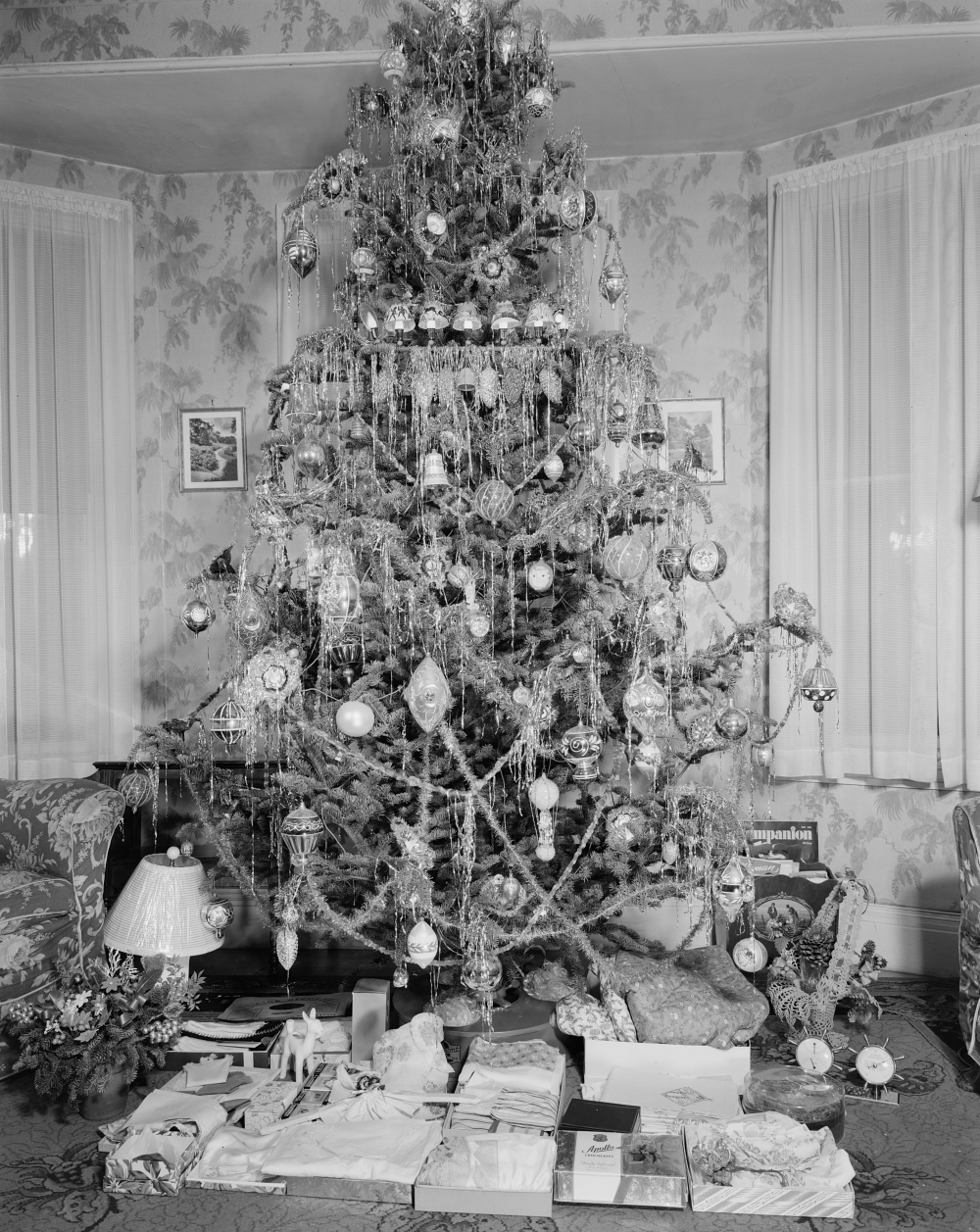
The photo above from 1942 shows a middle class Christmas. There are Shiny Brite ornaments and tinsel, but if you look there are only a scant few lights on the tree. A single fixture of 7 lights sits in the middle of upper portion of the tree. Lights were not as common back then.
The gifts on the floor include chocolates, an LP record, slippers, a dressing gown, some hand embroidered items, pajamas, a set of J.R. Watkins spices, and a fruitcake.
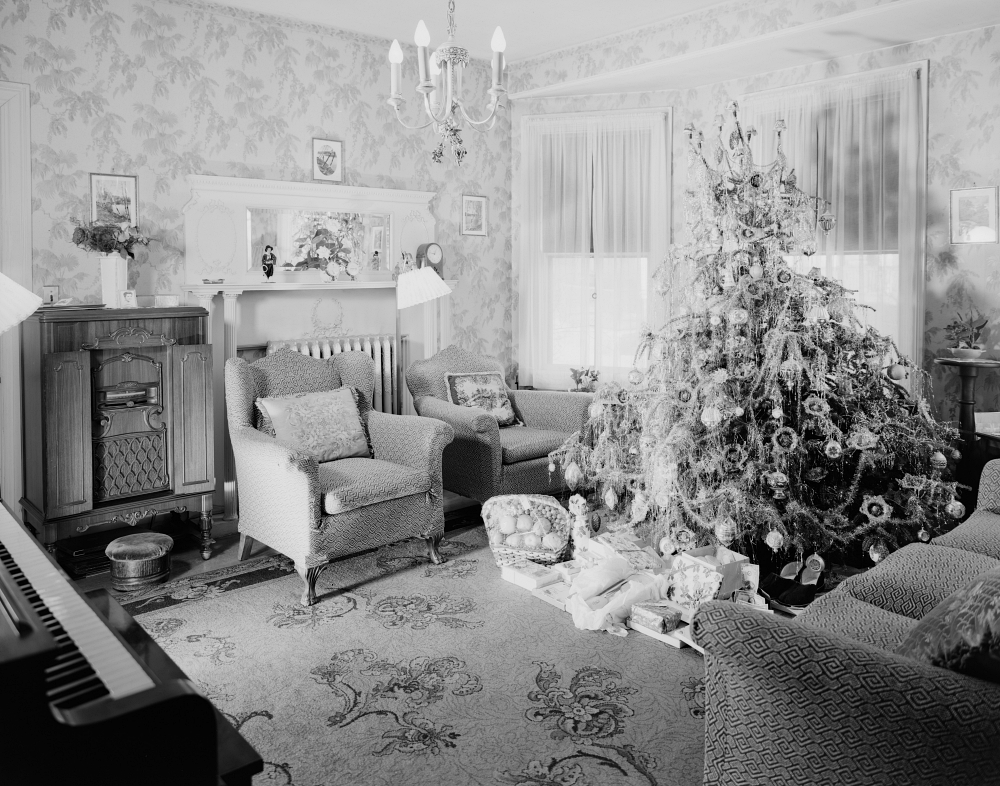
This Christmas tree has a ton of tinsel, but no lights. Under the tree are gifts of cash, a fruit basket, bottles of lotion or hair care, a vanity set of a comb, brush, and mirror, as well as another pair of slippers.
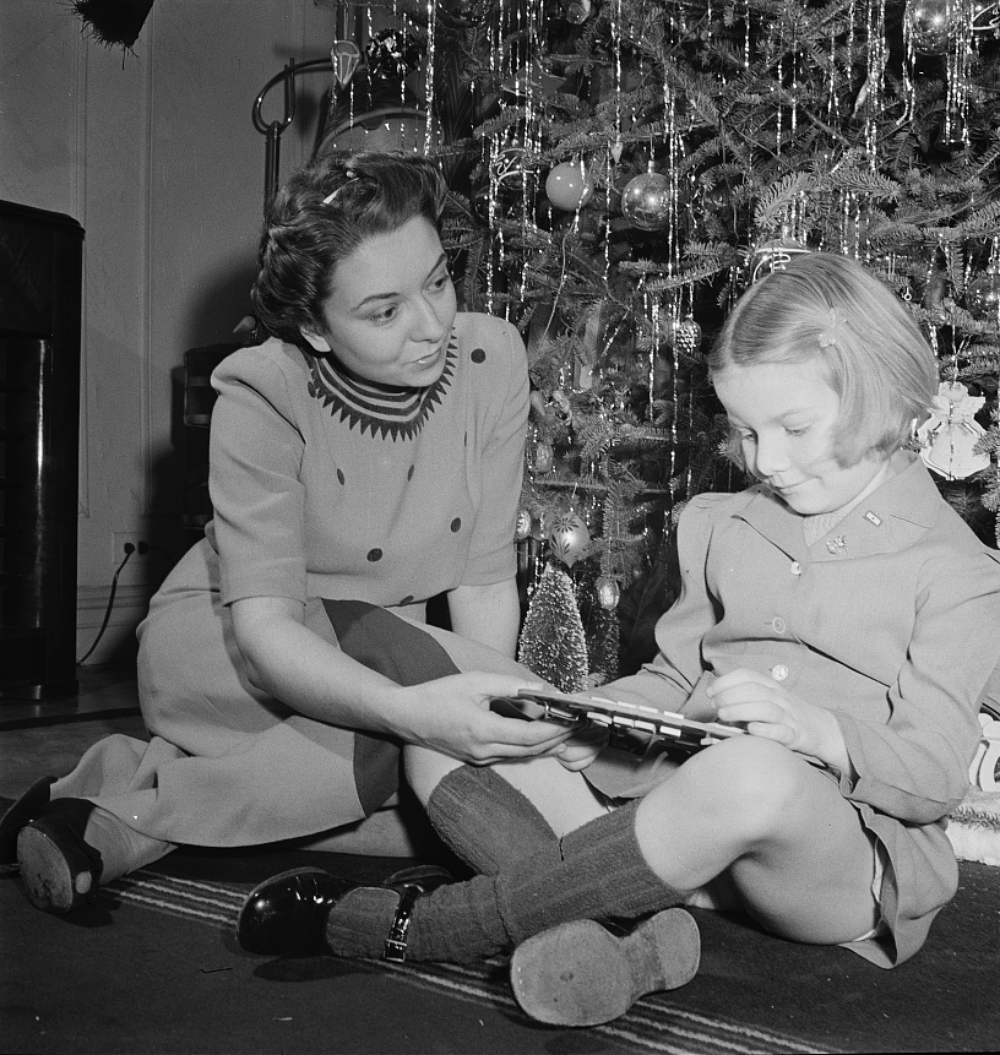
More tinsel on this tree as a grandmother sits with her granddaughter. The child wears a pin on her jacket to indicate that she has a male relative in the US Army.
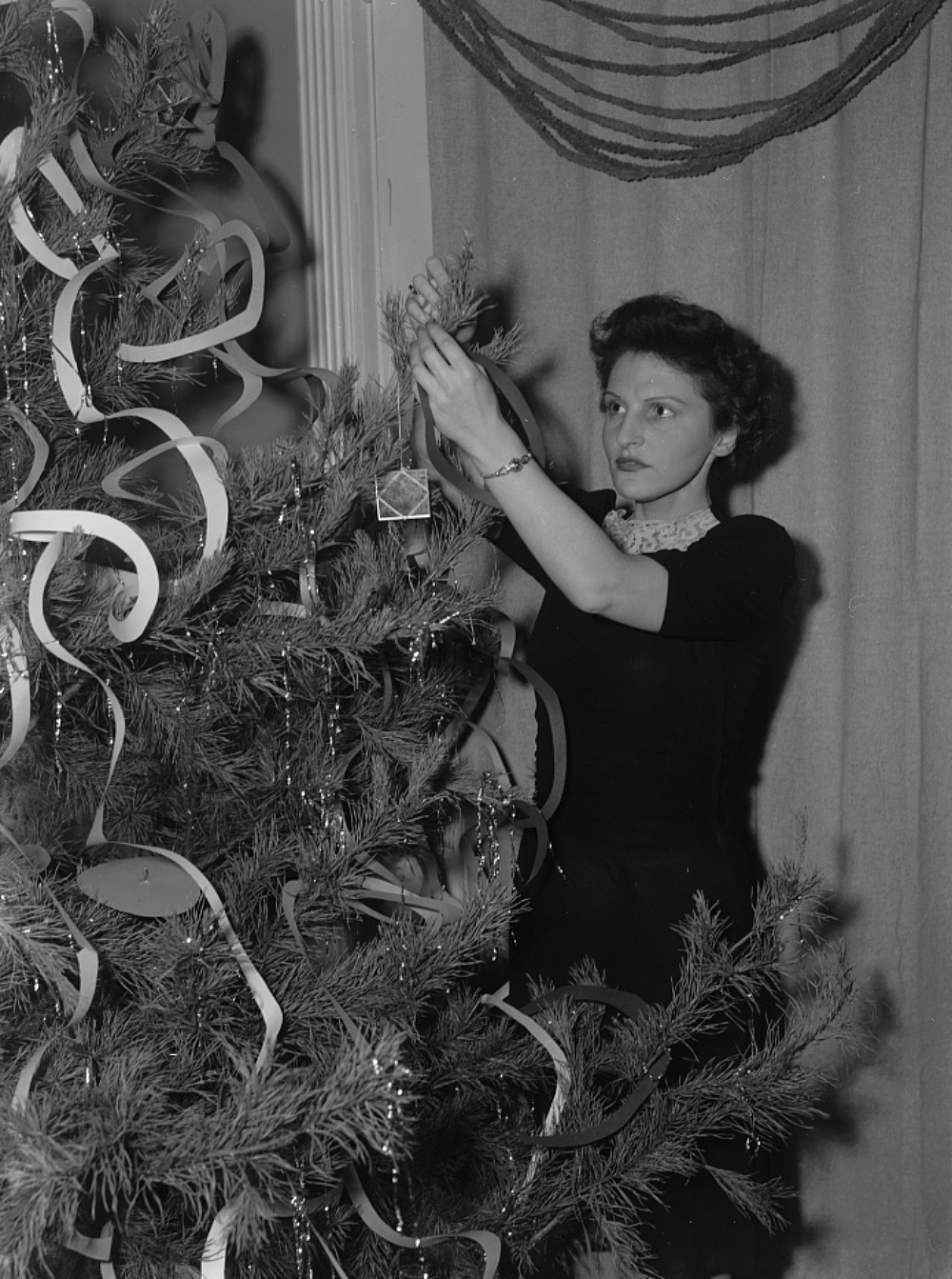
Many Christmas trees at the time were decorated mainly with handmade decorations such as paper spirals used as garland and paper cutouts of diamonds to replace glittering glass baubles.
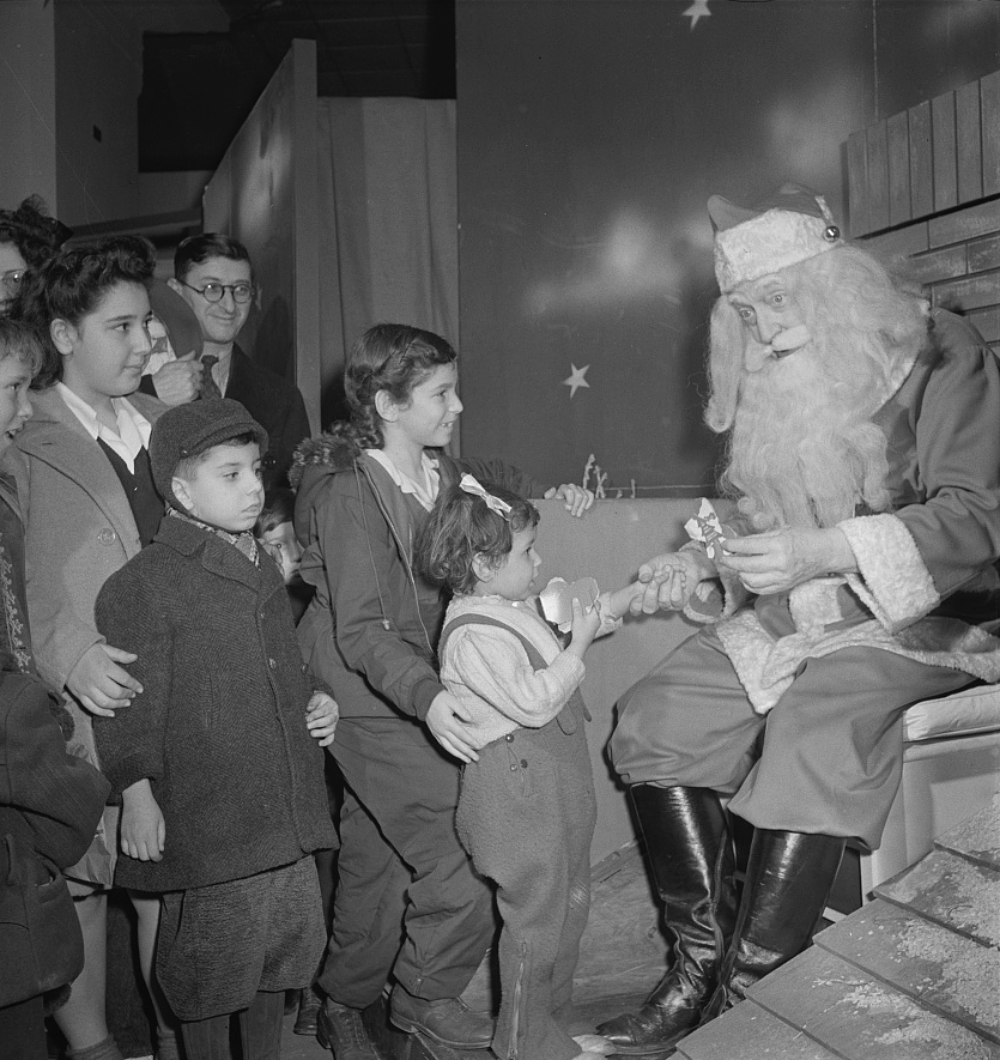
Children lined up to see Santa Claus at Macy’s in New York. This store had more than one Santa in the store at a time, but they were separated by a “labyrinth to prevent disillusionment of the children”.
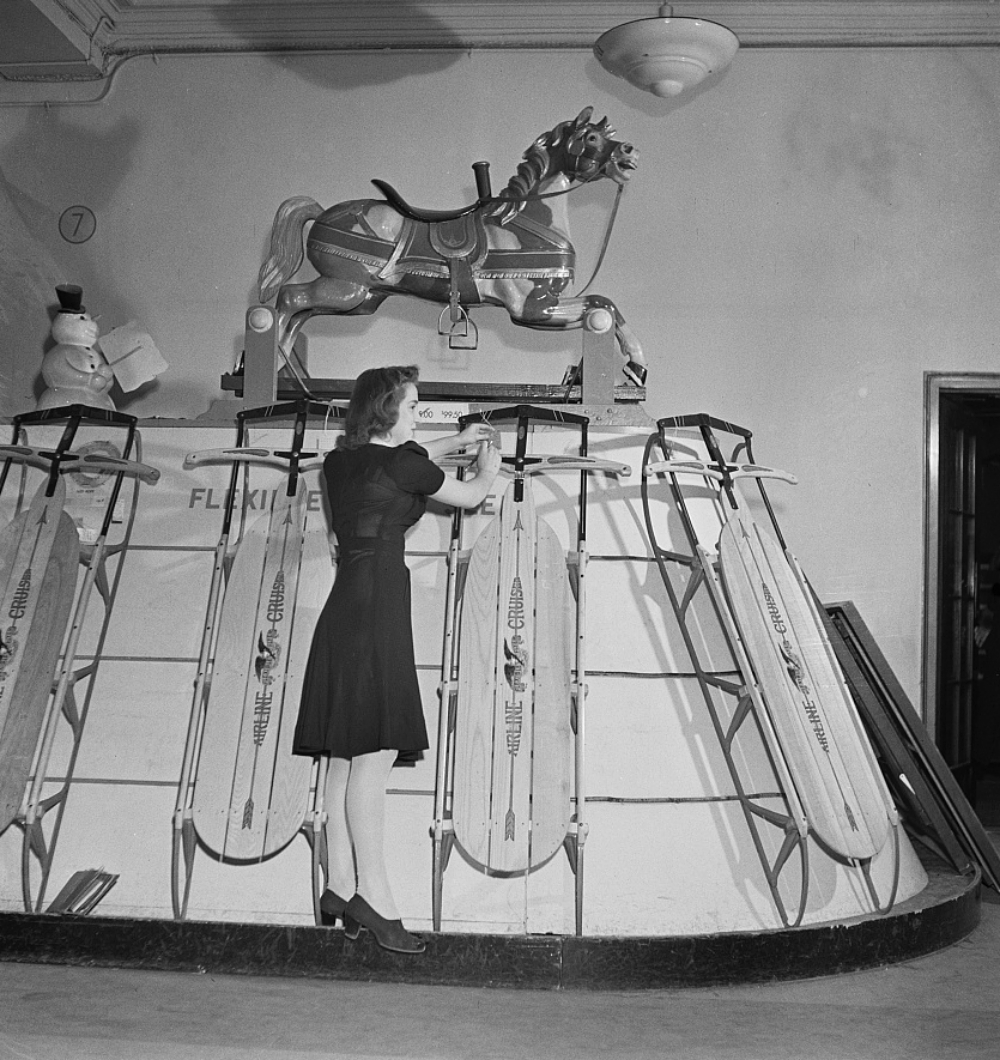
A department store shop girl puts a price tag on a sled in the busy weeks leading up to Christmas in 1942. The deluxe rocking horse at the top of the display cost nearly $100, probably not a model they sold a lot of that year as many families were still recovering from the Great Depression. This would be around $1,700 in today’s money.
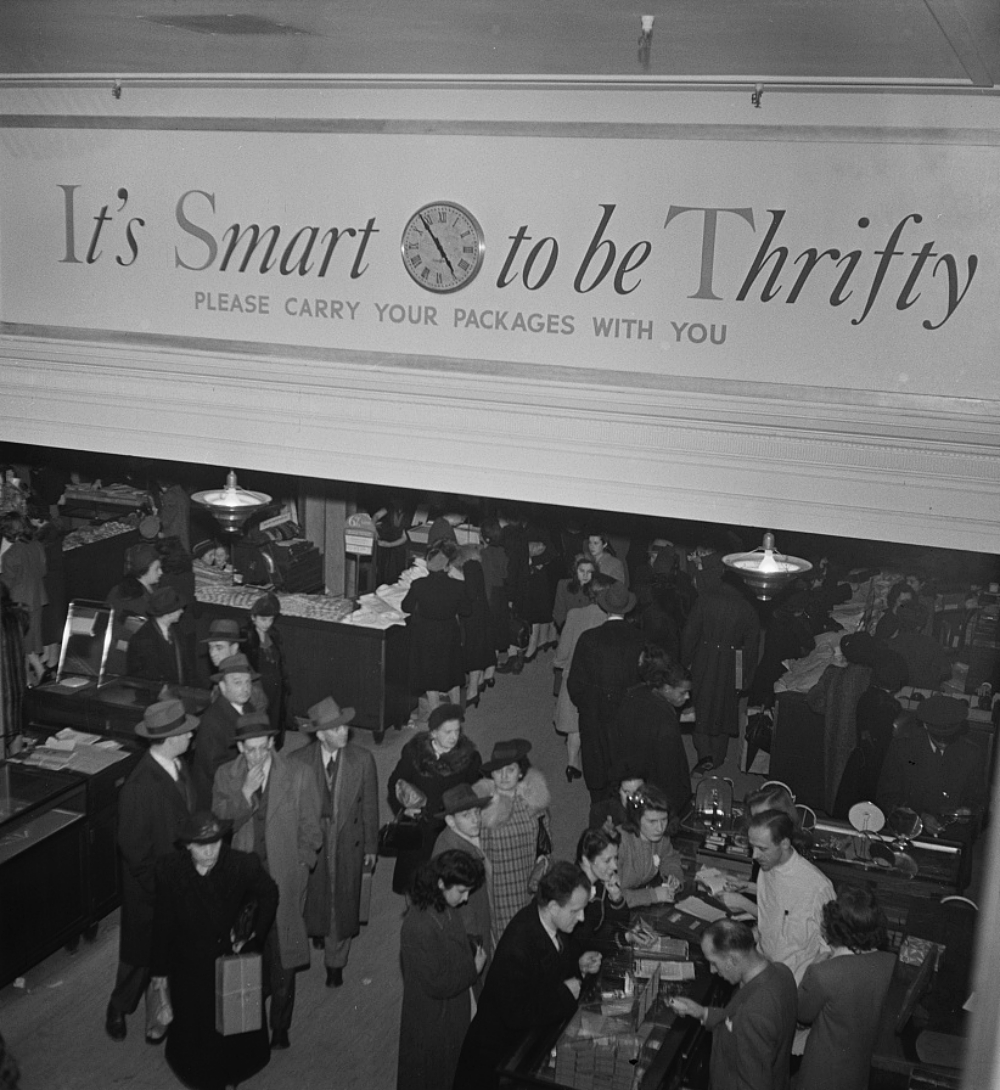
A sign at Macy’s encourages customers to save money by carrying their own packages home. Perhaps they were anticipating a rush on delivery services and the sign was an aid to lessen the demand. During the war shoppers were encouraged to carry their shopping home to avoid wasting the fuel that a delivery vehicle would have used.

Just look at all those shoppers. That is one busy department store!
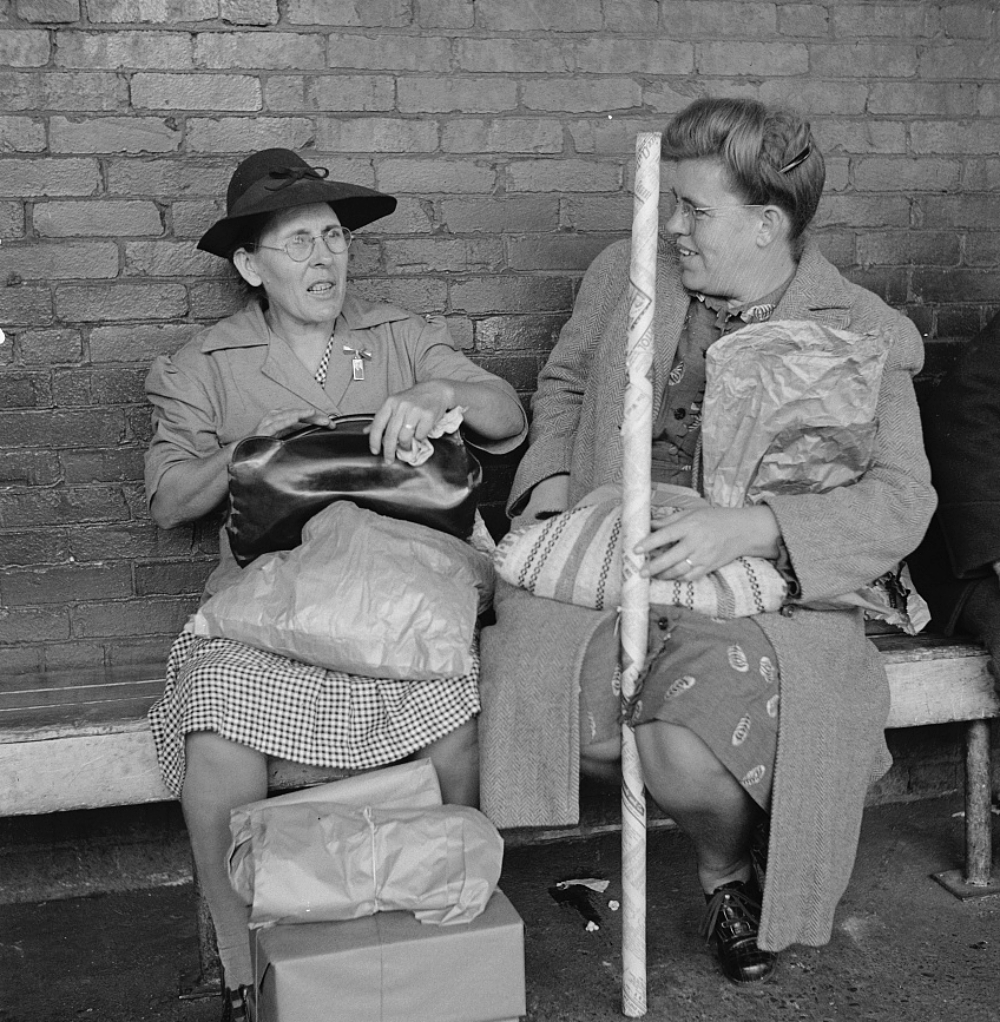
A different shopping experience was had by rural women outside Chattanooga, Tennessee. They took the Greyhound bus into the city to buy Christmas gifts for their families and particularly for their sons stationed overseas.
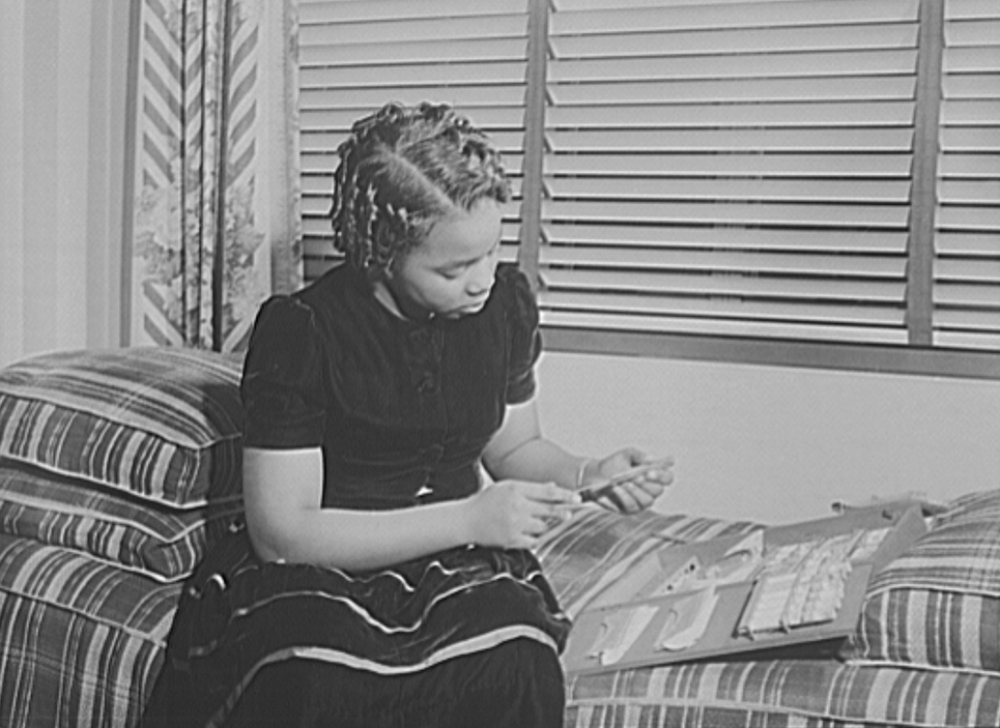
This lucky girl in Chicago got a chemistry set for Christmas.
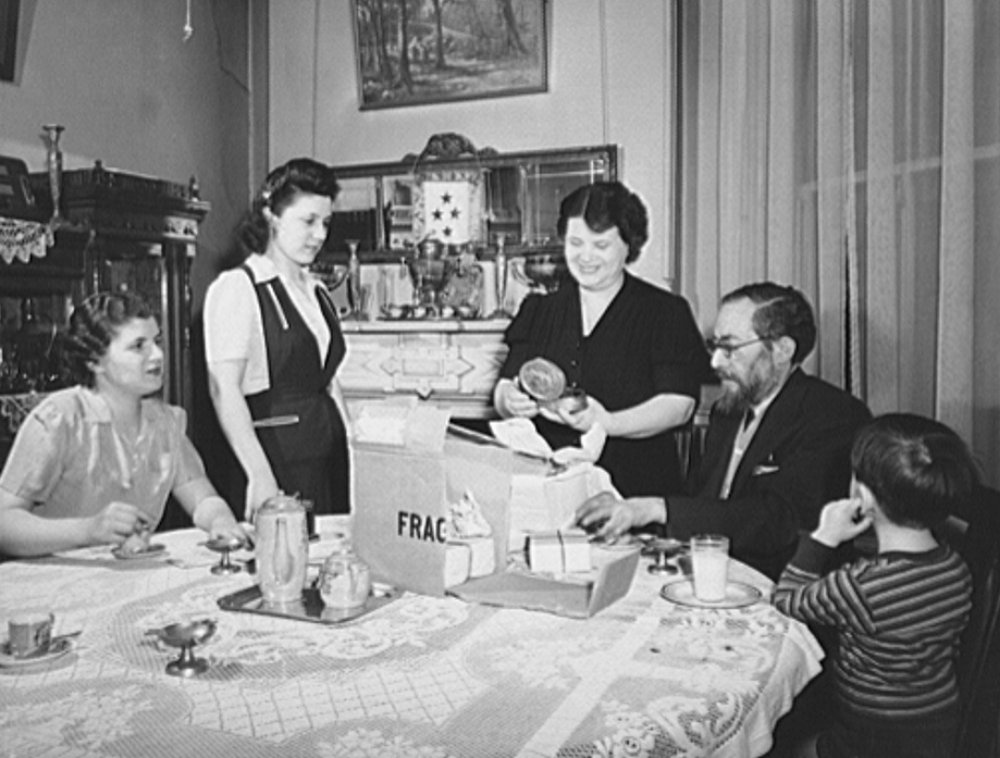
The Fazio family opens a package sent from their son stationed in Africa, Christmas 1943.
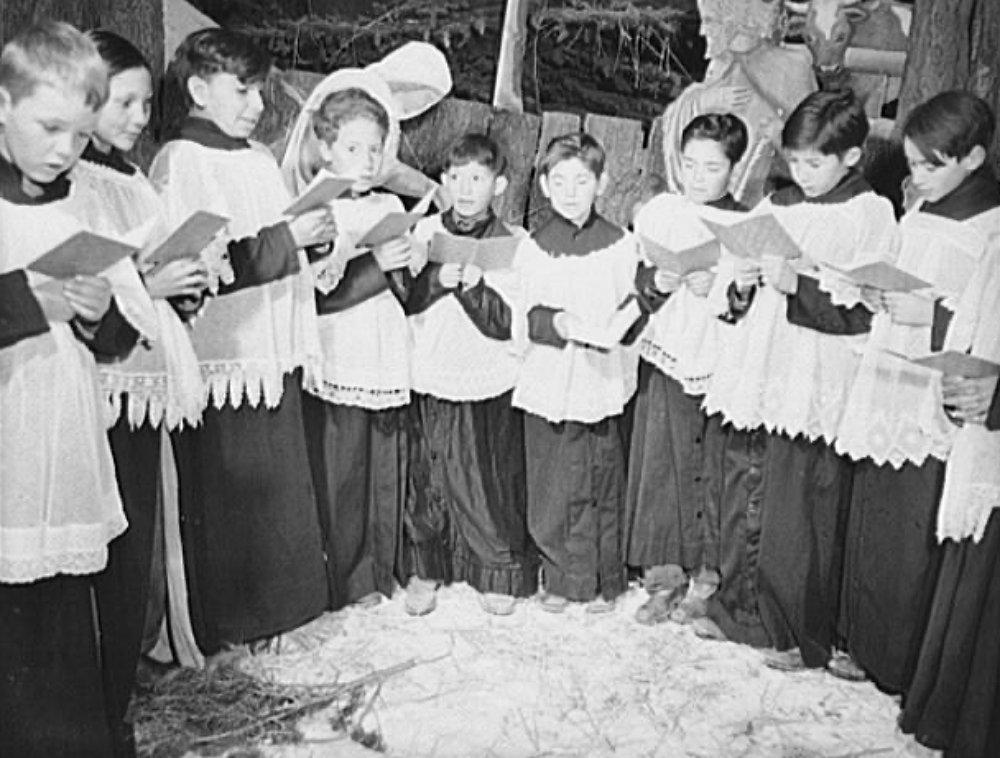
A boys choir in 1943 in New Mexico sings Christmas hymns in the old fashioned lace robes that were common in Catholic churches at the time.
Via:SKM: below-content placeholderWhizzco for DOT

